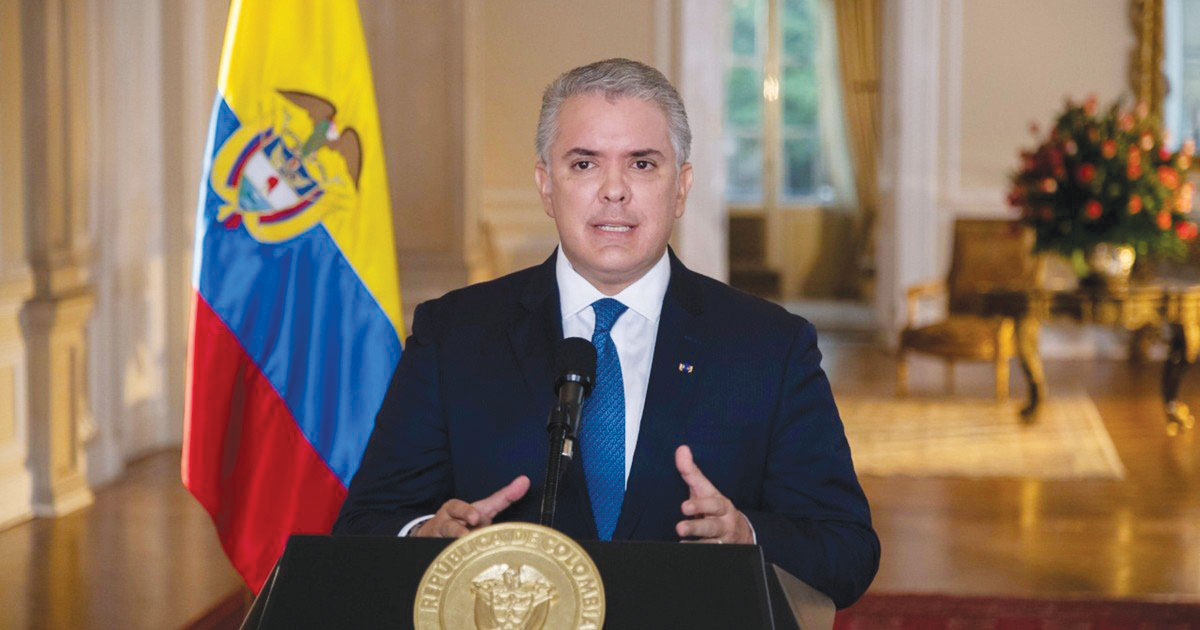
President Ivan Duque: bungled response
If all goes to plan, schools in Colombia (pop.50 million) will finally reopen over the next two weeks, with most children back by July 15. Better late than never. Schools in Mexico and Brazil resumed in-person teaching weeks earlier. By contrast, in Colombia children have borne one of the longest educational lockdowns in Latin America. (India: 57 weeks and counting).
Mostly this is due to Fecode, the powerful government school teachers’ union. It is part of the national committee that convened anti-government protests that have convulsed Colombia since April 28. As thousands took to the streets, its members refused to teach for at least 50 days. On July 8, as The Economist went to press, it was planning another march in the capital against reopening schools.
Fecode is one of the most powerful trade unions in Latin America, a region already full of over-mighty unions. Fully 87 percent of Colombia’s public school teachers are members. It has a history of throwing its weight around. In 2015, it went on strike to oppose a proposal to use more stringent measures to evaluate teachers; after three weeks, the government caved in. Since then, the union has felt emboldened, says Isabel Segovia, a Bogota-based education analyst.
The pandemic has further strengthened it. Fecode teachers initially refused to teach because they believed it put them at risk of catching the virus. With good reason. Around 11 percent of Colombia’s schools lack running water, making hand-washing impossible. Even so, much of the reason for the strike is political: the union wants a basic income programme that would cost 6 percent of GDP and to help elect a left-wing government in next year’s elections.
Nelson Alarcon, a union leader, says all teachers should be vaccinated before Fecode agrees to resume classes. Ideally, children should be vaccinated too. All teachers should stop working, he says, until the government provides every school water and enough space for students to learn two metres apart. Like many union leaders, he sees no reason to compromise. As in India, the government has continued to pay teachers’ salaries as they sit at home, so they have little incentive to get back to work.
Ivan Duque, Colombia’s president, has bungled his response to the teachers’ agitation. Only 25 percent of Colombians have had one Covid-19 vaccine jab, less than in Argentina, Brazil and Mexico. Until recently, many teachers have indeed not been vaccinated at all. Fitness trainers got their jabs first. For the government, “education is not a priority,” says Sandra Garcia of the School of Government at Los Andes University in Bogota. Last year, it set aside $106 million of its pandemic emergency budget ($4 billion) to adapt schools for social distancing. But the measure came months after schools had been shut, says Oscar Sanchez, a former secretary of education for Bogota. Also the funds were disbursed to local governments, many of which are weak or corrupt.
Colombian students were already poorly served relative to their peers before the pandemic. Since the 2000s, the government has spent 4 percent of GDP on education, less than in other poor Latin American countries. As there aren’t enough government schools, around half of children attend school in shifts. Teachers are poorly paid; nearly a third of primary-school teachers don’t have degrees.
Meanwhile, although data is patchy, many children may not bother to go back to school. A study by Ms Garcia suggests the dropout rate for Bogota this year could be around 8 percent (cf. 3 percent nationally). Some teenagers are joining gangs. The pandemic and the school closures will result in a lost generation, worries Ms Segovia.























